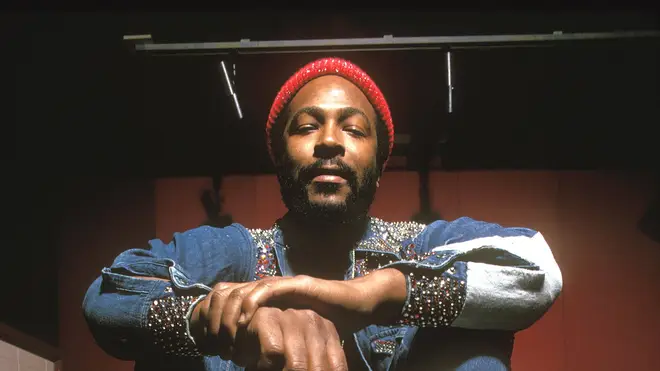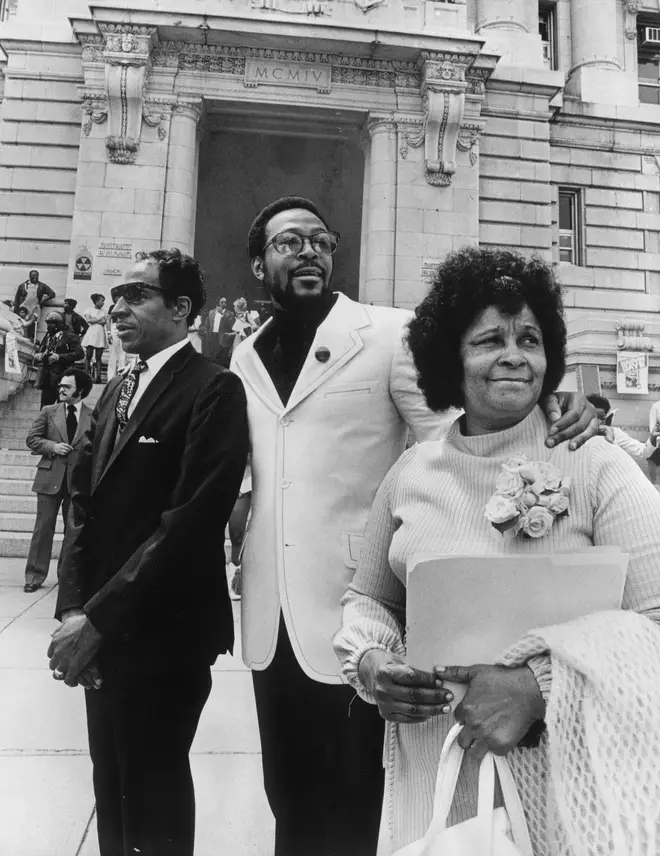Marvin Gaye
Marvin Gaye

Marvin Pentz Gay Jr. was born on April 2, 1939, at Freedman's Hospital in Washington, D.C., to church minister Marvin Gay Sr. and domestic worker Alberta Gay (née Cooper). His first home was in a public housing project, the Fairfax Apartments (now demolished) at 1617 1st Street SW in the Southwest Waterfront neighborhood. Although one of the city's oldest neighborhoods, with many elegant Federal-style homes, most buildings were small, in extensive disrepair, and lacked both electricity and running water. The alleys were full of one- and two-story shacks, and nearly every dwelling was overcrowded. Gaye and his friends nicknamed the area "Simple City", owing to it being "half-city, half country".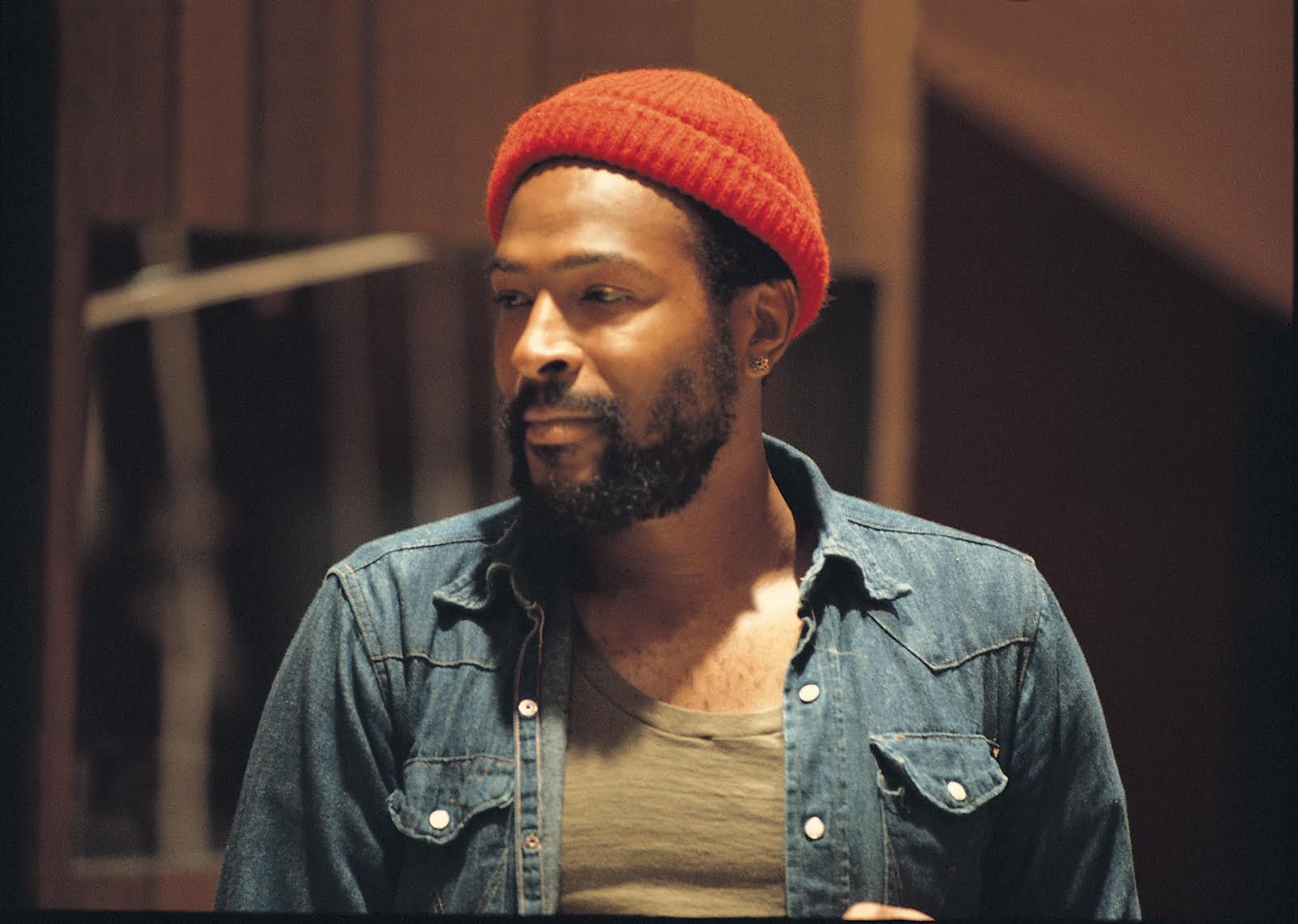
Gaye was the second oldest of the couple's four children. He had two sisters, Jeanne and Zeola, and one brother, Frankie Gaye. He also had two half-brothers: Michael Cooper, his mother's son from a previous relationship, and Antwaun Carey Gay, born as a result of his father's extramarital affairs.
Gaye started singing in church when he was four years old; his father often accompanied him on piano. Gaye and his family were part of a Pentecostal church known as the House of God that took its teachings from Pentecostalism, advocated strict conduct, and adhered to both the Old and New Testaments. Gaye developed a love of singing at an early age and was encouraged to pursue a professional music career after a performance at a school play at 11 singing Mario Lanza's "Be My Love". His home life consisted of "brutal whippings" by his father, who struck him for any shortcoming. The young Gaye described living in his father's house as similar to "living with a king, a very peculiar, changeable, cruel, and all-powerful king". He felt that had his mother not consoled him and encouraged his singing, he would have committed suicide. His sister later explained that Gaye was beaten often, from age seven well into his teenage years.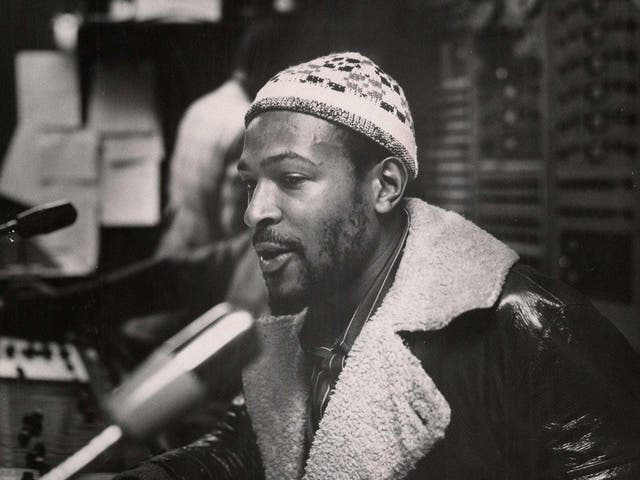
Gaye attended Syphax Elementary School and then Randall Junior High School. Gaye began to take singing much more seriously in junior high, and he joined and became a singing star with the Randall Junior High Glee Club.
In 1953 or 1954, the Gays moved into the East Capitol Dwellings public housing project in D.C.'s Capitol View neighborhood. Their townhouse apartment (Unit 12, 60th Street NE; now demolished) was Marvin's home until 1962.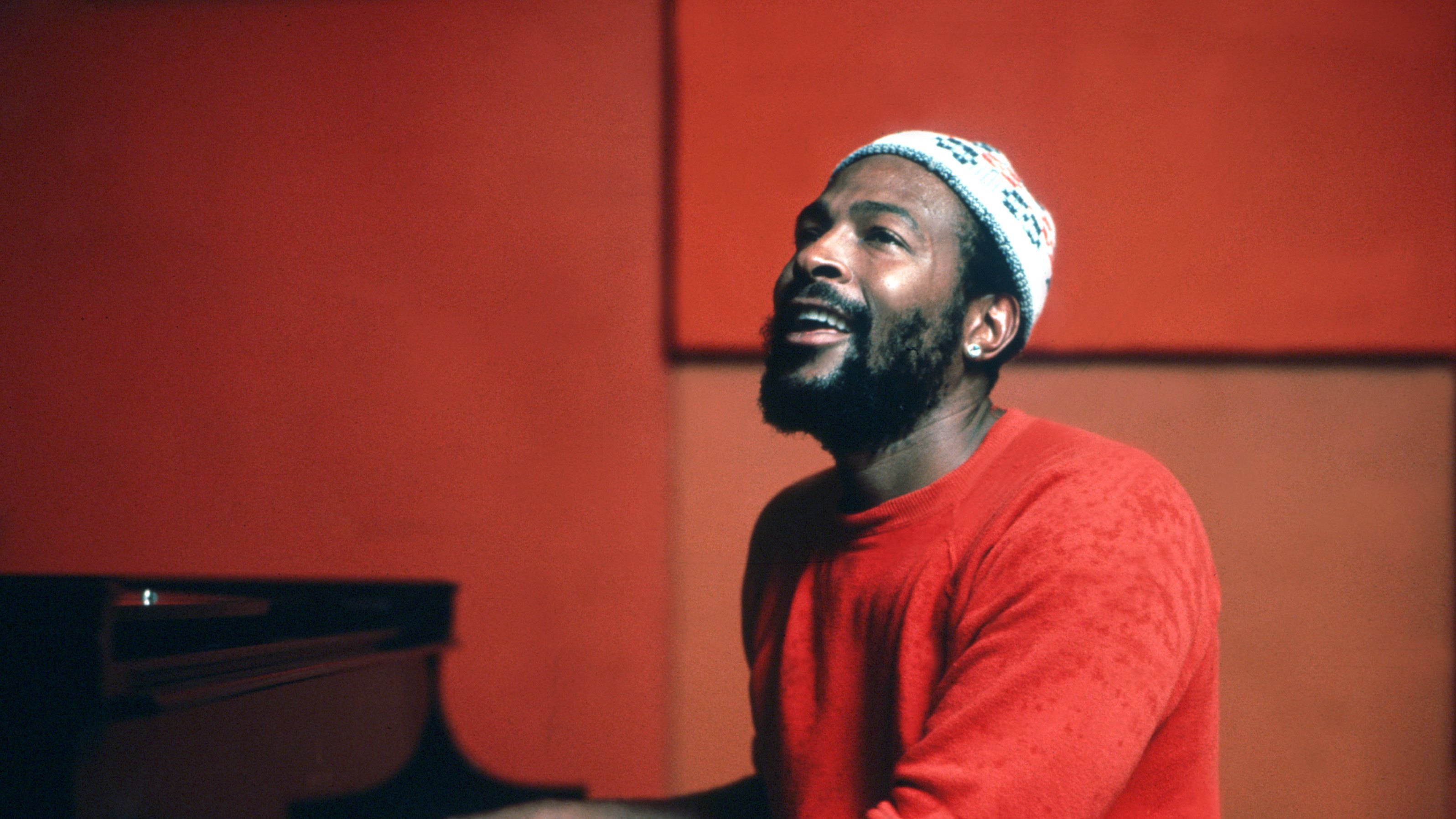
Gaye briefly attended Spingarn High School before transferring to Cardozo High School. At Cardozo, Gaye joined several doo-wop vocal groups, including the Dippers and the D.C. Tones. Gaye's relationship with his father worsened during his teenage years, as his father would kick him out of the house often. In 1956, 17-year-old Gaye dropped out of high school and enlisted in the United States Air Force as an Airman Basic. His early disenchantment with the service was similar to most of his peers who were made to perform menial labor, not working on jet airplanes as hoped. Gaye later said he lost his virginity to a local prostitute while in the Air Force. He feigned mental illness and was given a "General Discharge", with an outgoing performance review from his sergeant remarking "Airman Gay cannot adjust to regimentation nor authority".
Following his discharge from the Air Force, Gaye and his good friend Reese Palmer formed the vocal quartet The Marquees. The group performed in the D.C. area and soon began working with Bo Diddley, who assigned the group to Columbia subsidiary OKeh Records after failing to get the group signed to his own label, Chess. The group's sole single, "Wyatt Earp" (co-written by Bo Diddley), failed to chart, and the group was soon dropped from the label. Gaye began composing music during this period.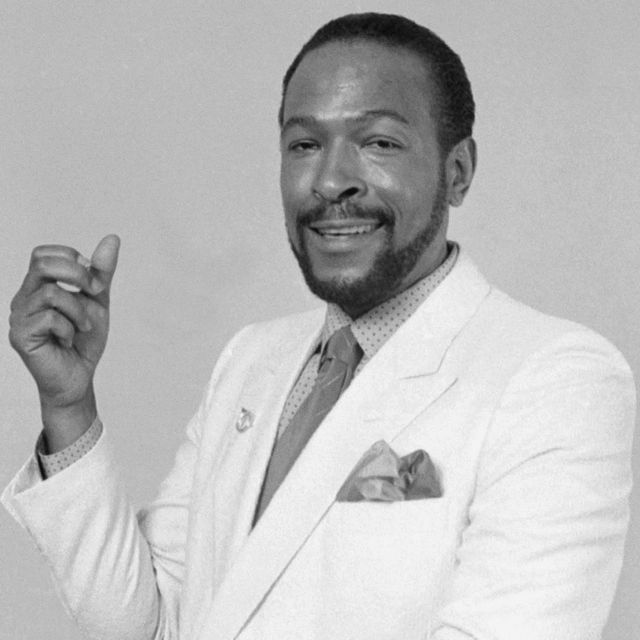
Moonglows co-founder Harvey Fuqua later hired The Marquees as employees. Under Fuqua's direction, the group changed its name to Harvey and the New Moonglows and relocated to Chicago. The group recorded several sides for Chess in 1959, including the song "Mama Loocie," which was Gaye's first lead vocal recording. The group found work as session singers for established acts such as Chuck Berry, singing on the songs "Back in the U.S.A." and "Almost Grown."
In 1960, the group disbanded. Gaye relocated to Detroit with Fuqua, where he signed with Tri-Phi Records as a session musician, playing drums on several Tri-Phi releases. Gaye performed at Motown president Berry Gordy's house during the holiday season in December 1960. Impressed, Gordy sought Fuqua on his contract with Gaye. Fuqua agreed to sell part of his interest in his contract with Gaye. Shortly afterward, Gaye signed with Motown subsidiary Tamla.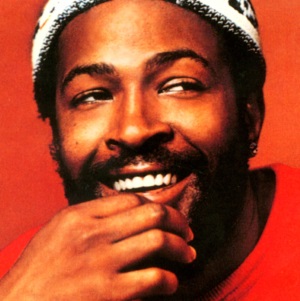
When Gaye signed with Tamla, he pursued a career as a performer of jazz music and standards, having no desire to become an R&B performer. Before the release of his first single, Gaye started spelling his surname with an added "e," in the same way as Sam Cooke did. Author David Ritz wrote that Gaye did this to silence rumors of his sexuality and to put more distance between himself and his father.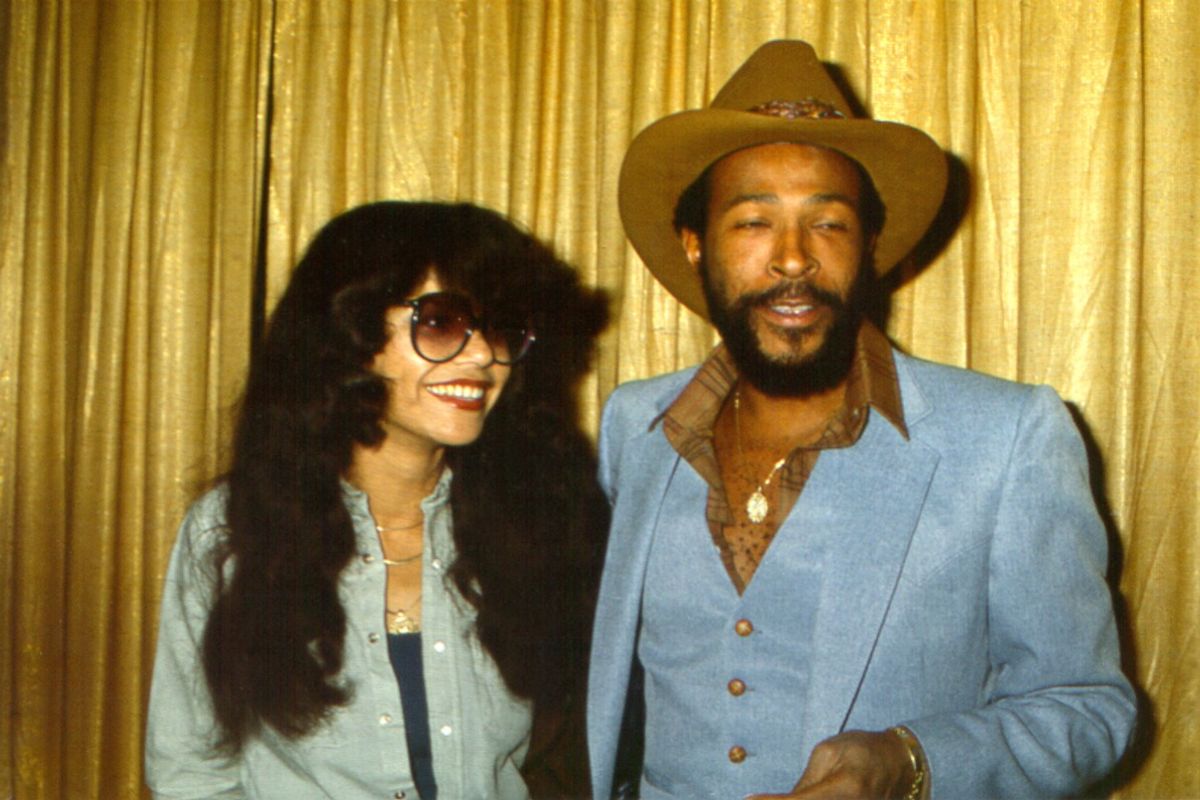
Gaye released his first single, "Let Your Conscience Be Your Guide," in May 1961, with the album "The Soulful Moods of Marvin Gaye" following a month later. Gaye's initial recordings failed commercially, and he spent most of 1961 performing session work as a drummer for artists such as The Miracles, The Marvelettes, and blues artist Jimmy Reed for $5 (US$49 in 2022 dollars) a week. While Gaye took some advice on performing with his eyes open (having been accused of appearing as though he were sleeping) and also got pointers on how to move more gracefully onstage, he refused to attend grooming school courses at the John Robert Powers School for Social Grace in Detroit because of his unwillingness to comply with its orders, something he later regretted. Gaye was also one of the few Motown artists who took no dance lessons from Cholly Atkins.:max_bytes(150000):strip_icc():format(webp)/marvin-gaye_1972_motown-photo-archive-2000-c82e21badf6d48c3abce4fec8cfba307.jpg)
In 1962, Gaye found success as the co-writer of the Marvelettes track "Beechwood 4-5789," on which he also played drums. His first solo success, "Stubborn Kind of Fellow," was later released in September, reaching No. 8 on the R&B chart and No. 46 on the Billboard Hot 100. Gaye first reached the pop top 40 with the dance song "Hitch Hike," peaking at No. 30 on the Hot 100. "Pride and Joy" became Gaye's first top ten single after its release in 1963.
The three singles and songs from the 1962 sessions were included on Gaye's second album, "That Stubborn Kinda Fellow," released on Tamla in January 1963. Starting in October 1962, Gaye performed as part of the Motortown Revue, a series of concert tours headlined at the north and southeastern coasts of the United States as part of the Chitlin' Circuit, a series of rock shows performed at venues that welcomed predominantly black musicians. A filmed performance of Gaye at the Apollo Theater took place in June 1963. Later that October, Tamla issued the live album, "Marvin Gaye Recorded Live on Stage." "Can I Get a Witness" became one of Gaye's early international successes.
In 1964, Gaye recorded a successful duet album with singer Mary Wells titled "Together," which reached No. 42 on the pop album chart. The album's two-sided single, including "Once Upon a Time" and "What's the Matter With You Baby," each reached the top 20. Gaye's next solo success, "How Sweet It Is (To Be Loved By You)," which Holland-Dozier-Holland wrote for him, reached No. 6 on the Hot 100 and reached the top 50 in the UK. Gaye started getting television exposure around this time, on shows such as American Bandstand. Also in 1964, he appeared in the concert film The T.A.M.I. Show. Gaye had two number-one R&B singles in 1965 with the Miracles–composed "I'll Be Doggone" and "Ain't That Peculiar." Both songs became million-sellers. After this, Gaye returned to jazz-derived ballads for a tribute album to the recently-deceased Nat "King" Cole.
After recording "It Takes Two" with Kim Weston, Gaye began working with Tammi Terrell on a series of duets, mostly composed by Ashford & Simpson, including "Ain't No Mountain High Enough," "Your Precious Love," "Ain't Nothing Like the Real Thing," and "You're All I Need to Get By."
In October 1967, Terrell collapsed in Gaye's arms during a performance in Farmville, Virginia. Terrell was subsequently rushed to Farmville's Southside Community Hospital, where doctors discovered she had a malignant tumor in her brain. The diagnosis ended Terrell's career as a live performer, though she continued to record music under careful supervision. Despite the presence of successful singles such as "Ain't Nothing Like the Real Thing" and "You're All I Need to Get By," Terrell's illness caused problems with recording and led to multiple operations to remove the tumor. Gaye was reportedly devastated by Terrell's sickness and became disillusioned with the record business.
On October 6, 1968, Gaye sang the national anthem during Game 4 of the 1968 World Series, held at Tiger Stadium, in Detroit, Michigan, between the Detroit Tigers and the St. Louis Cardinals.
In late 1968, Gaye's recording of "I Heard It Through the Grapevine" became his first to reach No. 1 on the Billboard Hot 100. It also reached the top of the charts in other countries, selling over four million copies. However, Gaye felt the success was something he "didn't deserve" and that he "felt like a puppet – Berry's puppet, Anna's puppet." Gaye followed it up with "Too Busy Thinking About My Baby" and "That's the Way Love Is," which reached the top ten on the Billboard Hot 100 in 1969. That year, his album "M.P.G." became his first No. 1 album on the R&B album charts. During this period, Gaye produced and co-wrote "Baby I'm For Real" and "The Bells" for The Originals.
Tammi Terrell died from brain cancer on March 16, 1970; Gaye attended her funeral, and after a period of depression, Gaye sought out a position on a professional football team, the Detroit Lions, where he later befriended Mel Farr and Lem Barney. Barney and Farr had gotten gold records for providing backup vocals for the title track of Gaye's "What's Going On" album. The Lions played along for the publicity but ultimately declined an invitation for Gaye to try out, owing to legal liabilities and fears of possible injuries that could have affected his music career.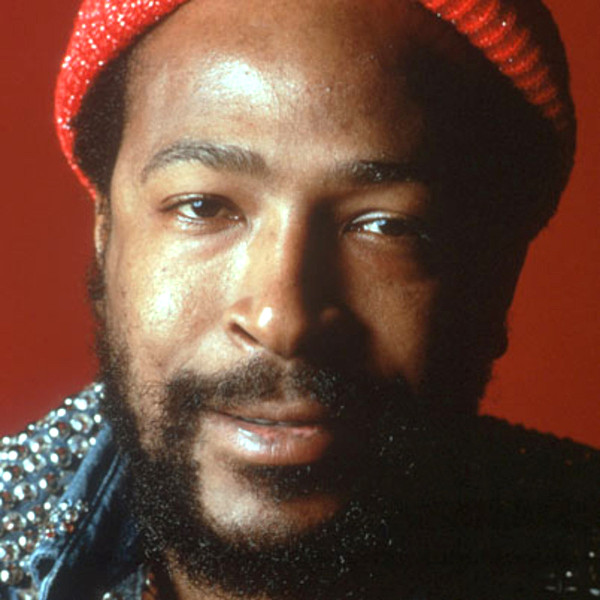
On June 1, 1970, Gaye returned to Hitsville U.S.A., where he recorded his new composition "What's Going On," inspired by an idea from Renaldo "Obie" Benson of the Four Tops after he witnessed an act of police brutality at an anti-war rally in Berkeley. Upon hearing the song, Berry Gordy refused its release due to his feelings of the song being "too political" for radio and feared Gaye would lose his crossover audience. Gaye responded by deciding against releasing any other new material before the label released it. Released in 1971, it reached No. 1 on the R&B charts within a month, staying there for five weeks. It also reached the top spot on Cashbox's pop chart for a week and reached No. 2 on the Hot 100 and the Record World chart, selling over two million copies.
After giving an ultimatum to record a full album to win creative control from Motown, Gaye spent ten days recording the "What's Going On" album that March. Motown issued the album that May after Gaye remixed the album in Hollywood. The album became Gaye's first million-selling album, launching two more top ten singles, "Mercy Mercy Me (The Ecology)" and "Inner City Blues." One of Motown's first autonomous works, its theme and segue flow brought the concept album format to rhythm and blues and soul music. An AllMusic writer later cited it as "the most important and passionate record to come out of soul music, delivered by one of its finest voices." For the album, Gaye received two Grammy Award nominations at the 1972 ceremony and several NAACP Image Awards. The album also topped Rolling Stone's year-end list as its album of the year. Billboard magazine named Gaye Trendsetter of the Year following the album's success.
In 1971, Gaye signed a new deal with Motown worth $1 million (US$7,225,965 in 2022 dollars), making it the most lucrative deal by a black recording artist at the time. Gaye first responded to the new contract with the soundtrack and subsequent score, "Trouble Man," released in late 1972. Before the release of "Trouble Man," Marvin released a single called "You're the Man." The album of the same name was a follow-up to "What's Going On," but Motown refused to promote the single, according to Gaye. According to some biographies, Gordy, who was considered a moderate, feared Gaye's left-leaning political views would alienate Motown's moderately liberal audiences. As a result, Gaye shelved the project and substituted it for "Trouble Man." In 2019, Universal Music Group released the album on what would've been Gaye's 80th birthday. In between the releases of "What's Going On" and "Trouble Man," Gaye and his family relocated to Los Angeles, making Marvin one of the final Motown artists to move there despite early protests urging him to stay in Detroit.
In August 1973, Gaye released the "Let's Get It On" album. Its title track became Gaye's second No. 1 single on the Hot 100. The album was later hailed as "a record unparalleled in its sheer sensuality and carnal energy." Other singles from the album included "Come Get to This," which recalled Gaye's early Motown soul sound of the previous decade, while the suggestive "You Sure Love to Ball" reached modest success on the R&B charts, while also managing to make the pop top 50, its success halted by radio refusing to play the sexually explicit song.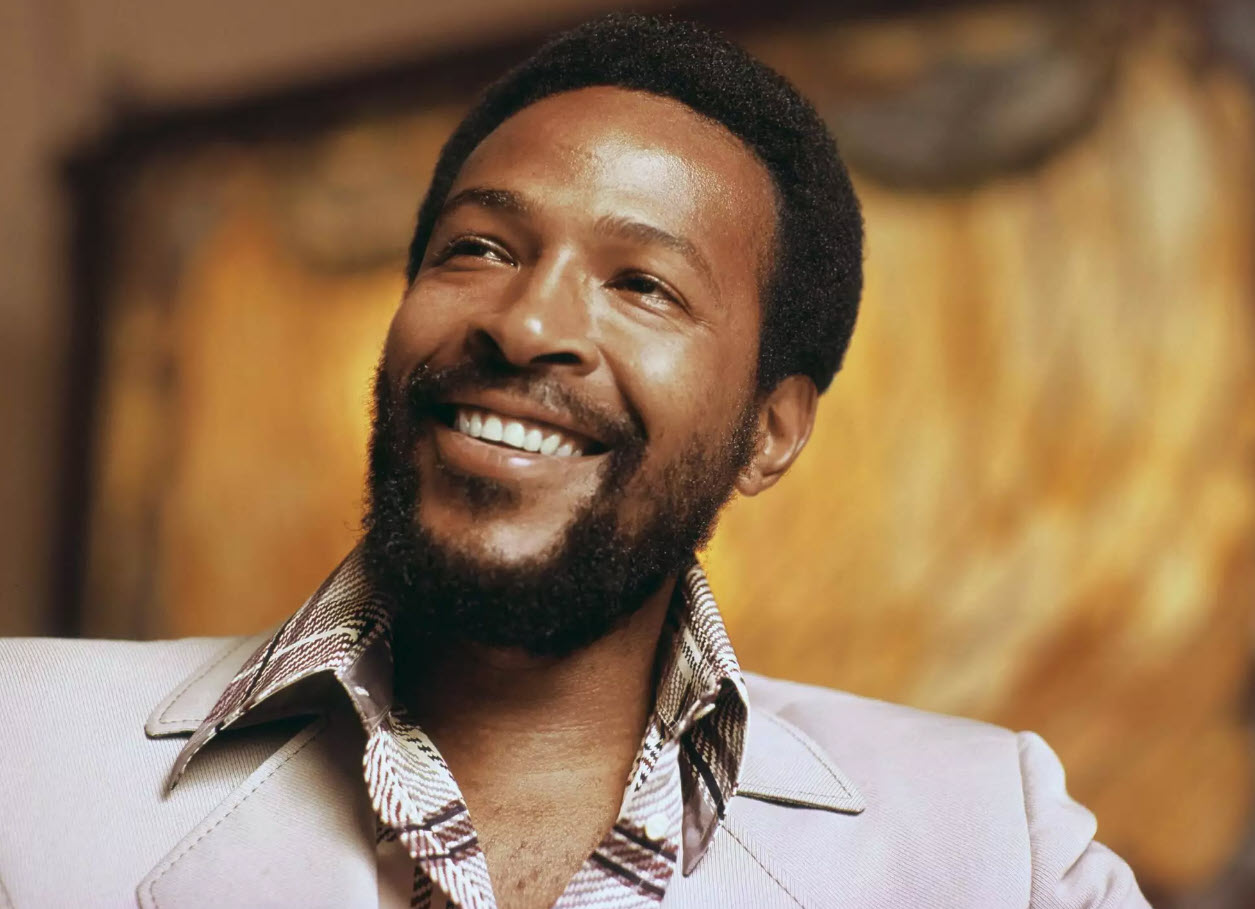
In the 1970s, Gaye's sister-in-law turned her attention to Frankie Beverly, the founder of Maze. Marvin took them on his tours and featured them as the opening acts of his concerts and persuaded Beverly to change the band's name from Raw Soul to Maze.
Marvin's final duet project, "Diana & Marvin," with Diana Ross, garnered international success despite contrasting artistic styles. Much of the material was crafted especially for the duo by Ashford and Simpson. Responding to demand from fans and Motown, Gaye started his first concert tour in four years at the Oakland–Alameda County Coliseum on January 4, 1974. The performance received critical acclaim and resulted in the release of the live album, "Marvin Gaye Live!" and its single, a live version of "Distant Lover," an album track from "Let's Get It On."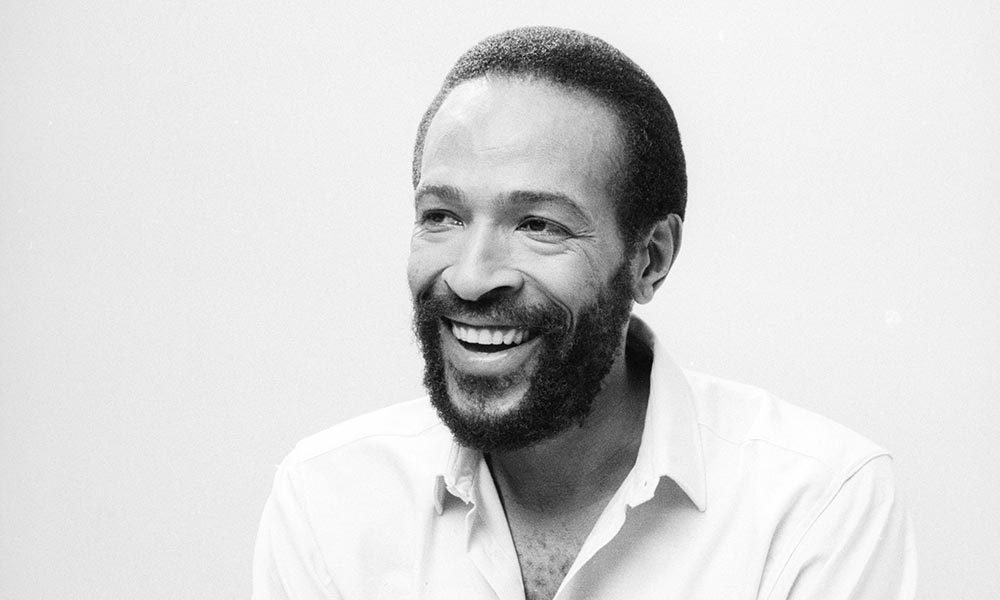
The tour helped to enhance Gaye's reputation as a live performer. For a time, he was earning $100,000 a night for performances. Gaye toured throughout 1974 and 1975. A renewed contract with Motown allowed Gaye to build his own custom-made recording studio.
In December 1978, Gaye released "Here, My Dear," inspired by the fallout from his first marriage to Anna Gordy. Recorded with the intention of remitting a portion of its royalties to her as alimony payments, it performed poorly on the charts. During that period, Gaye's cocaine addiction intensified while he was dealing with several financial issues with the IRS. These issues led him to move to Maui, where he struggled to record a disco-influenced album titled "Love Man," with a probable release date for February 1980, though he would later shelve the project. That year, Gaye went on a European tour, his first in four years. By the time the tour stopped, he had relocated to London when he feared imprisonment for failure to pay back taxes, which had now reached upwards of $4.5 million (US$15,982,633 in 2022 dollars).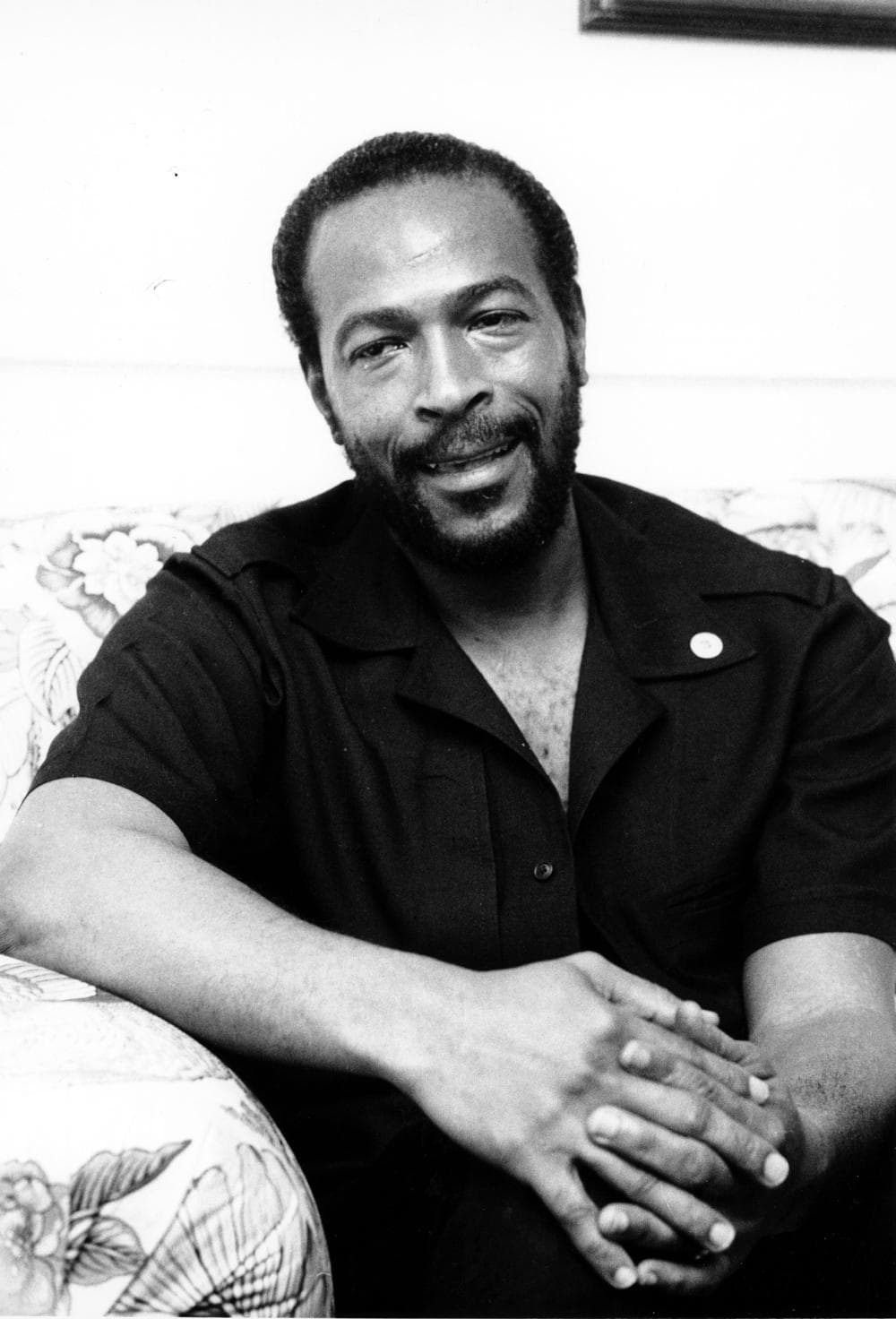
Gaye then reworked "Love Man" from its original disco concept to another socially-conscious album invoking religion and the possible end time from a chapter in the Book of Revelation. Titling the album "In Our Lifetime?", Gaye worked on the album for much of 1980 in London studios such as Air and Odyssey Studios.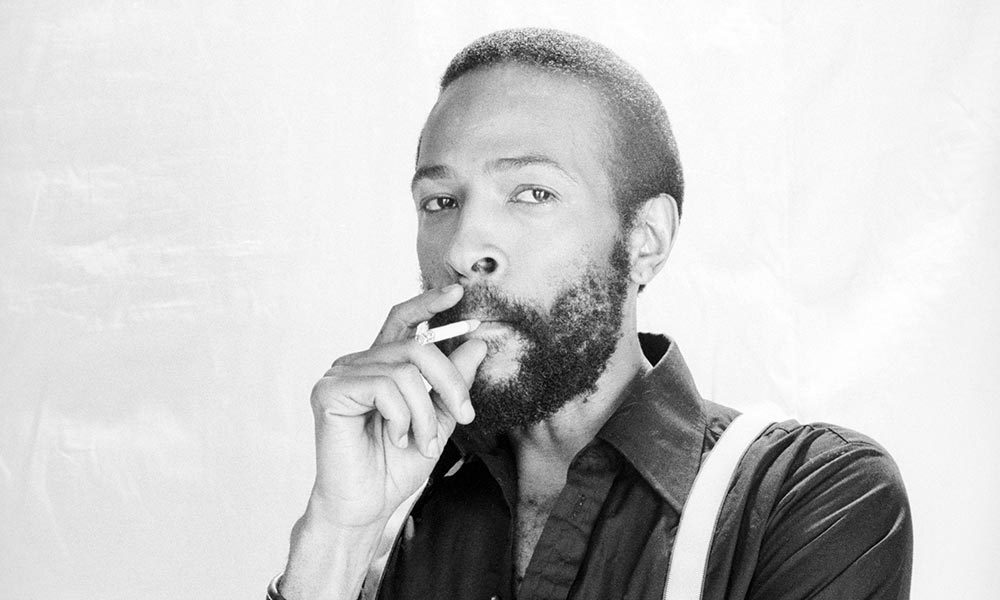
In the fall of that year, someone stole a master tape of a rough draft of the album from one of Gaye's traveling musicians, Frank Blair, taking the master tape to Motown's Hollywood headquarters. Motown remixed the album and released it on January 15, 1981. When Gaye learned of its release, he accused Motown of editing and remixing the album without his consent, allowing the release of an unfinished production ("Far Cry"), altering the album art of his request and removing the album title's question mark, muting its irony. He also accused the label of rush-releasing the album, comparing his unfinished album to an unfinished Pablo Picasso painting. Gaye then vowed not to record any more music for Motown.
On February 14, 1981, under the advice of music promoter Freddy Cousaert, Gaye relocated to Cousaert's apartment in Ostend, Belgium. While there, Gaye shied away from heavy drug use and began exercising and attending a local Ostend church, regaining personal confidence. Following several months of recovery, Gaye sought a comeback onstage, starting the short-lived "Heavy Love Affair" tour in England and Ostend in June–July 1981. Gaye's personal attorney Curtis Shaw would later describe Gaye's Ostend period as "the best thing that ever happened to Marvin." When word got around that Gaye was planning a musical comeback and an exit from Motown, CBS Urban president Larkin Arnold eventually was able to convince Gaye to sign with CBS Records. On March 23, 1982, Motown and CBS negotiated Gaye's release from Motown. The details of the contract were not revealed due to a possible negative effect on Gaye's settlement to creditors from the IRS and to stop a possible bidding war by competing labels.
Citations
- Hoard, Christian; Brackett, Nathan, eds. (2004). The New Rolling Stone Album Guide. Simon & Schuster. p. 524. ISBN 9780743201698.
- ^ Simmonds 2008, pp. 190–192.^ Jump up to:
- a b Weisbard, Eric; Marks, Craig (October 10, 1995). Spin Alternative Record Guide (Ratings 1–10) (1st edi. ed.). New York: Vintage Books. pp. 202–205. ISBN 0-679-75574-8. OCLC 32508105.[permanent dead link]
- ^ "Marvin Gaye". National Academy of Recording Arts and Sciences. June 4, 2019. Archived from the original on November 17, 2017. Retrieved June 9, 2019.^ Jump up to:
- a b Batchelor 2005, pp. 41–43.^ Jump up to:
- a b Wedner, Diane (September 16, 2007). "Taking Over From Titans". Los Angeles Times. Retrieved March 13, 2021.
- ^ Dial Them For Murder. January 1998. Archived from the original on July 5, 2014. Retrieved September 13, 2012 – via Los Angeles Magazine.
- ^ "Marvin Gaye Timeline". The Rock and Roll Hall of Fame. January 21, 1987. Archived from the original on May 1, 2011. Retrieved December 23, 2010.





